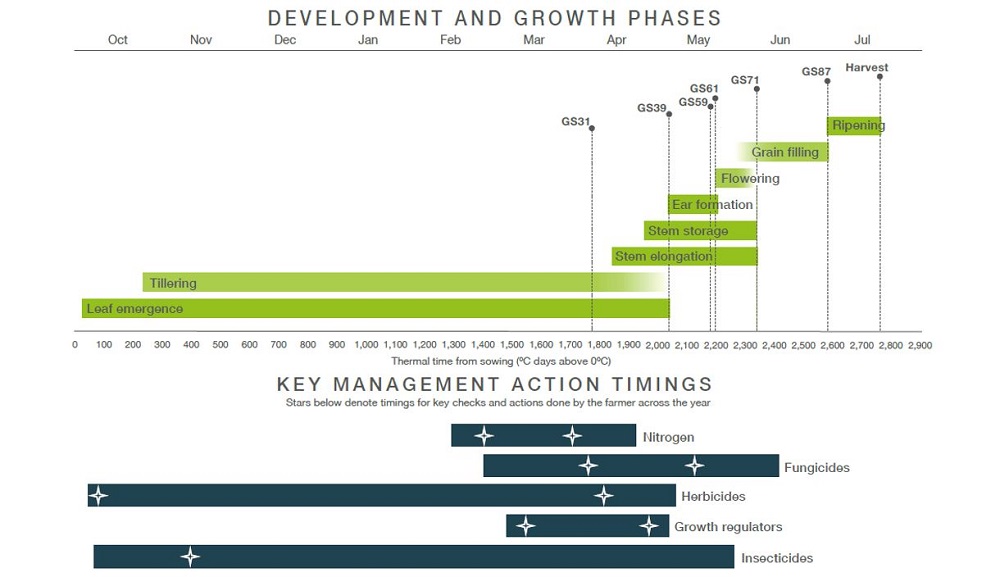- Home
- Knowledge library
- Key development phases and growth stages in barley
Key development phases and growth stages in barley
As barley progresses through its life cycle, the crop changes in form (development) and accumulates dry matter (growth). Discover how these changes can be described by key cereal growth stages and developmental phases.
Barley growth and development (key facts)
Development
- Some phases of development have more effect on harvestable yield than others
- The rate at which barley develops is highly influenced by variety choice and sowing date
Growth
- Some phases of growth have more effect on harvestable yield than others
- Management should maximise growth in those phases that influence yield most, particularly ear number
- Spring barley crops pass through growth stages much faster than winter barley crops
Cereal growth stages
A plant’s life cycle can be described by ten developmental phases. Understanding these principal growth stages (GS) can help assist with management decisions.
- Germination: GS00–09
- Seedling growth: GS10–19
- Tillering: GS20–29
- Stem elongation: GS30–39
- Booting: GS40–49
- Ear emergence: GS50–59
- Flowering: GS60–69
- Milk development: GS70–79
- Dough development: GS80–89
- Ripening: GS90–GS99
Crop development is measured by progress through growth stages. The speed at which a crop progresses through each developmental stage is governed by:
- Temperature: Warm conditions speed up development
- Vernalisation: Cool, not freezing, temperatures advance the start of flower initiation in the majority of winter barley varieties
- Day length: Long days advance floral development
 AHDB
AHDB
Note: Management action timings are indicative of what may be applied to a typical barley crop and are not intended as recommendations. Advisers who are BASIS-qualified (for crop protection products) or FACTS-qualified (for fertiliser) should be consulted for specific rate and timing recommendations.
.jpg) AHDB
AHDB

